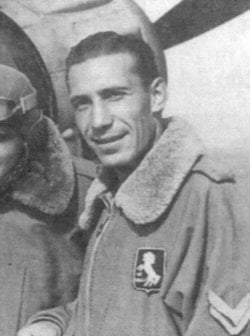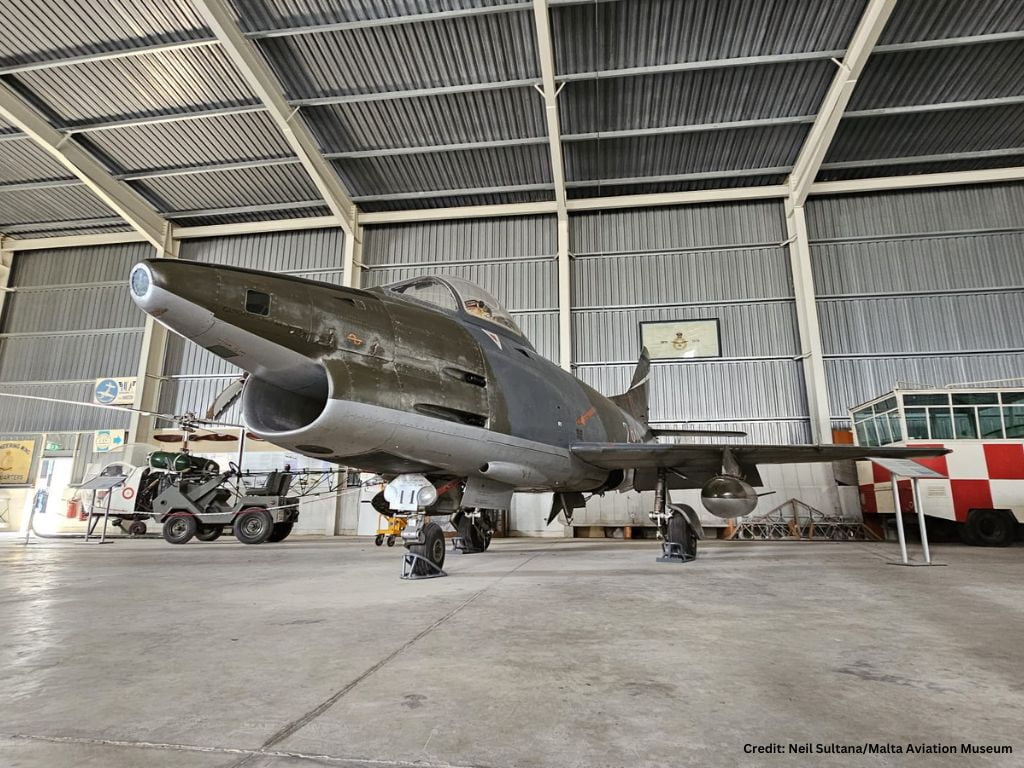By Robin J. Brooks
On 1 July, 1944, 500 (County of Kent) Squadron, Royal Auxilary Air Force assembled on the sandy ground at La Senia, to be told they were to be disbanded with their aircraft being transferred to 27 Squadron of the South African Air Force. Many aircrew and groundcrew were posted forthwith and a number of the auxiliares returned to England. The final curtain had fallen on 500 Squadron. Or had it?
It will never really be known if it were an act of God or whether somebody at the headquarters of the Mediterranean Coastal Air Force had realised that he had got his sums wrong. Whatever it was, before the entire squadron had left La Senia, a signla was received giving notice of the reforming of the squadron. More than that, they were to convert to the Martin Baltimore, a heavily armed light bomber aircraft. The squadron was to operate under the command of the Desert Air Force.
By 1 August the reforming was complete except for the aircraft which had not yet materialised. Considerable difficulty was experienced in collecting much of equipment which had been handed to 27 Squadron. Orders were again changed and 500 were instructed to proceed to Italy.
Under a new commanding officer, Wg Cdr H N Garbett, they were ordered to Pescara, a little town on the Adriatic coast. There they would find the Baltimore aircraft, a type that the RAF was using exclusively in the Mediterranean operating them both by day and by night. It had played a very prominent part during the North African offensive and was now being used in the Italian campaign.
Powered by two Wright Double Row Ciclone engines, the aircraft had an all-metal stressed skin construction with a maximum speed of 302 mph at 11,000 feet. With a maximum bomb load of 2,000 lb, the armament consisted of four 0.303 guns in the wings, two or four 0.303 guns in the ventral position. It also had provision for four fixed rear firing 0.303 guns ensuring that it packed a formidable punch.
On 23 August, the ground-crews sailed from Algiers for Taranto on the liner “Villa d’Oran”, a luxury French liner that had now been converted as a troopship. Escorted by a destroyer and a frigate, the ship slipped out of Algiers at nightfall. After a very uneventful journey the ship docked at Taranto. The squadron thanked the members of the crew and disembarked to cover the rest of the journey by train. The stop and start train continued throughout the night until 0600 hrs the following morning when it drew into a siding and hot water was made available for tea.
The second stop of the day was at Salerno before the train finally made it to Naples Central where the troops disembarked. The squadron commander. Wg Cdr Garbett was there to welcome them before the journey continued until the squadron reached Pescara. At last the men could rest and attempt to turn the airfield into home.
Next morning came the crunch. Due to the heavy operational programme with which the original squadron had been entrusted, the Baltimores were found to be in poor condition. Out of the entire completement of aircraft, only four were found to be serviceable, the rest required major servicing. Immediately the ground-crews got to work and by the end of September, all the aircraft were in tip-top condition.
And so, having arrived and settled in Pescara, a full programme of intensive training began both for aircrews and ground-crews. The greatest problem at this time was the weather with continuous rain turning the surface of the airfield into a bog. This was obviously no good for operations to begin and a signal was received for the squadron to leave Pescara and move to Perugia, where the surface of the airfield was more suitable.
Training now continued at a furious pace for with the Italian Campaign reaching its conclusion, 500 Squadron was to be a part of the last thrust. Yet again another signal was received informing the squadron that it was to move to Cesenatico, an airfield higher up on the Adriatic coast to the north. With the ground and administration crews leaving on 1 December, the aircraft were flown to the new airfield on the 9th. The surface here was laid with Sommerfeld Tracking making the surface operational whatever the weather.
On the morning of 11 December, 500 Squadron mounted its first operation of the month. It was intended to put twelve aircraft up but in the event only ten were fully serviceable by the time the squadron was due to depart. All the aircraft returned safely some hours later, the only damage being inflicted on Sqd Ldr Bull’s aircraft “U” for Uncle. This turned out to be a flak hole through the alieron. As soon as the aircraft landed they were checked and refuelled ready for the next day’s operations. This however was not to be as the weather turned with thick fog blanketing the front and causing a halt to all operations.
For the next three days the weather was bad and not untile Saturday 16 December was the diarist able to record the following: “Saturday 16. Weather improving and the operations gong sounded about 1330hrs and we rushed joyously into the fray. Plenty of activity everywhere on the ‘drome’. Aircraft going off in all directions but we have a target all our own. We learn by devious routes that it is a heavy gun site near Castel Bologna. To our relief twelve aircraft got off without mishap and returned at around 1600hrs. One aircraft is missing from ‘B’ flight which turns out the be ‘W’ with Flt Sgt Snow and crew. Later we learn that the machine was hit by flak over the target, one engine being severely damaged. It crashed near Cervia in some mud flats and burnt out. Whilst Flt Sgt Snow is OK and Flt Sgt Thomas slightly injured, sadly Flt Sgts Hedley and Messenger have been killed.”
As soon as the news of the crash reached the SHQ at Cesenatico, the squadron medical officer and the engineering officer drove to the scene of the crash. Some trouble was experienced in finding the location as no information was readily available as to the exact spot. Eventually local people helped and they reached the scene to find a most horrific sight. The locals had managed to drag three of the crew from the burning aircraft and had taken them to the local hospital. They informed the medical officer that several of the crew had perished in the crash.
The full story evolve that the Baltimore had received a direct hit in the port engine causing the aircraft to become uncontrollable. Flt Sgt Snow had tried in vain to keep the aircraft in the air but eventually had been forced to crash land close to Cervia. On the 17th, 18th, 19th and 20th, the weather again prevented operations over enemy lines and with mid-December approaching it took its toll of cancelled operations. With Christmas celebrations over, 500 Squadron looked forward to a much busier time during 1945 as the war rushed to its conclusion.
One of the major operations for the squadron and one of the most important targets in the Mediterranean theatre was when they were detailed to attack the headquarters of Field Marshal Albert von Kesselring, the Supreme Commander in Italy. With his headquarters just inside enemy territory, it seemed incomprehensible that it would be attacked by the RAF. The operation was led by Flt Sgt Newton, who with four other Baltimores, left Cesenatico at dawn and climbed into a clear morning sky.
Coming in low, the aircraft attacked in succession in spite of heavy ground fire. ‘R’ was holed and did not carry out the attack but all aircraft returned safely to base after a successful raid. The only detraction from the success of the operation was that it was later verified that Kesselring was not at home! The squadron continued with operations for the following months inflicting great damage on enemy positions. As the pace quickened to victory, the Italian Campaign ended on 1 May 1945 and for 500 Squadron it meant the end of a hard and gruelling period in their history.
On the 1, the diarist recorded: ” As the war in Italy is drawing to a close, the wing could not find any targets for the squadron. News was received quietly of the ending of the war as Air Vice Marshal A E Borton CB CMG DSO AFC, the Kent Regional Liaison Officer, today visited the squadron auxiliaries”. The last few operations took place in the vicinity of the Po Valley. Flying on instruments by night, the squadron kept up a constant bombardment over the area thus ensuring that the Germans did not escape across the river.
Finally the long years of conflict had come to an end. As 500 Squadron disbanded and the auxiliary airmen returned home, it was announced that the squadron would be re-activated to form part of the pacetime airforce in the UK. A far cry from the Mediterranean theatre of operations, the squadron was later to become the first auxiliary squadron to convert to the Meteor jet aircraft, a mount that they brought to Malta on two summer camps.
With the disbandment of all the auxiliary squadrons in 1957, 500 (County of Kent) Squadron, Royal Auxiliary Air Force was forced to disappear from the Royal Air Force Order of Battle. It will however, never be forgotten for its operations in the Mediterranean.




